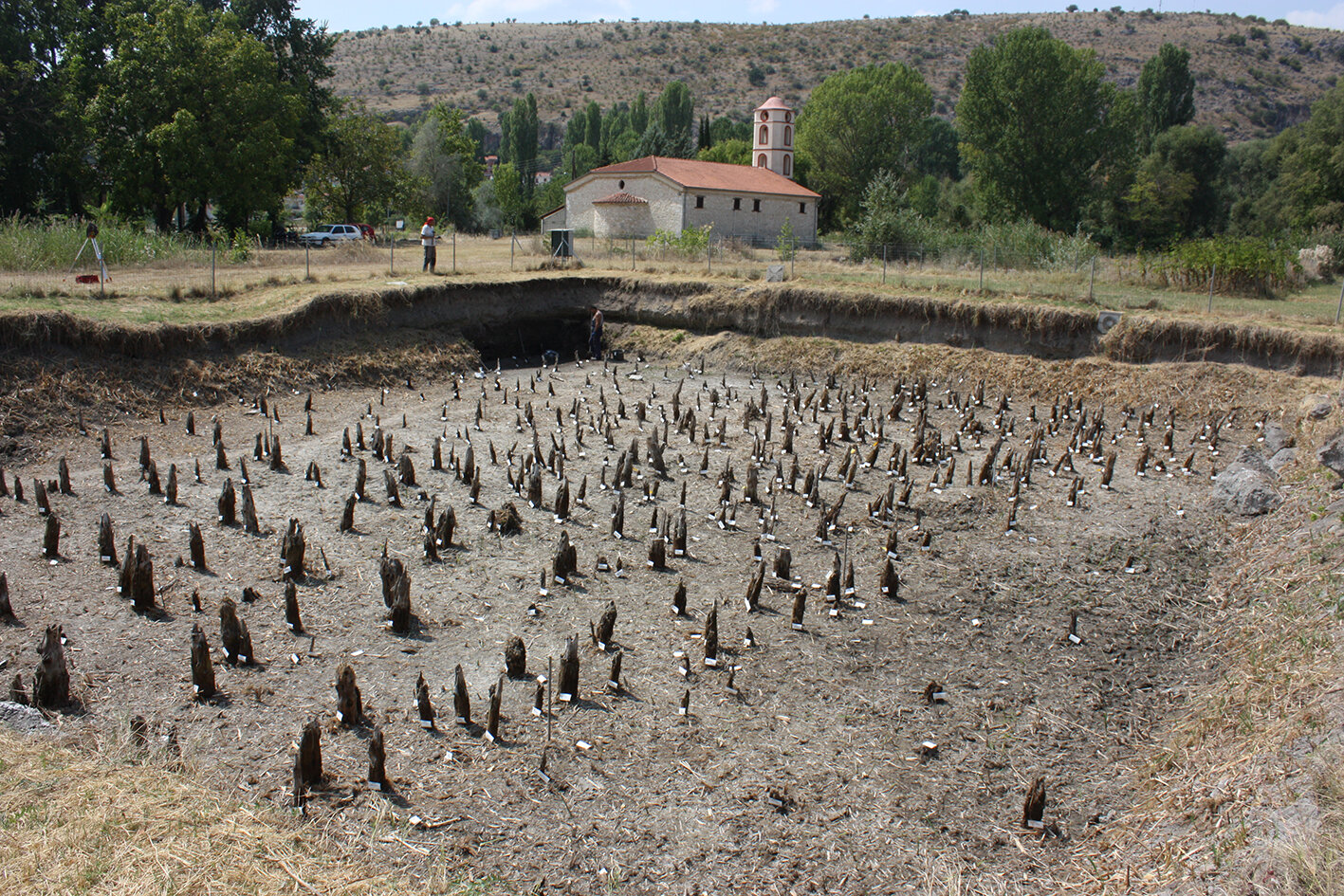A team has now succeeded in precisely dating timber from the archaeological site of Dispilio in northern Greece, where dating to the year had previously not been possible, to different building activities between 5328 and 5140 BC. The researchers made use of high-energy particles from space, which can be reliably dated to 5259 BC.
As long as a tree is alive, it absorbs the radioactive isotope 14C (radiocarbon) contained in the Earth’s atmosphere through photosynthesis. When it dies, it no longer absorbs 14C; the isotope decays with a half-life of 5730 years.
In 2012, a solution to the problem emerged: Japanese physicist Fusa Miyake discovered that a massive influx of cosmic rays, presumably due to solar flares, can cause an uptick in the atmosphere’s 14C content, which is deposited in the respective years’ tree rings.
These spikes can be accurately dated on the basis of long tree-ring chronologies, and because they are global events, they are important anchor points, especially in regions without consistent annual growth ring chronologies.


